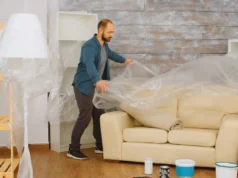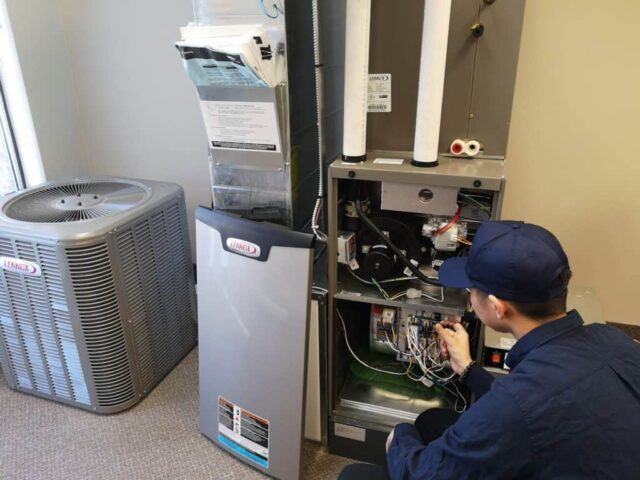
A popping furnace is an annoying problem that will require some DIY troubleshooting. Furnace noises are common and can include a variety of sounds ranging from whistling to screeching, to banging.
However, if you hear a series of popping noises coming from your furnace, it could be an indication of several potential issues with the system.
Diagnosing the Problem: Identifying the Cause of the Popping Noise
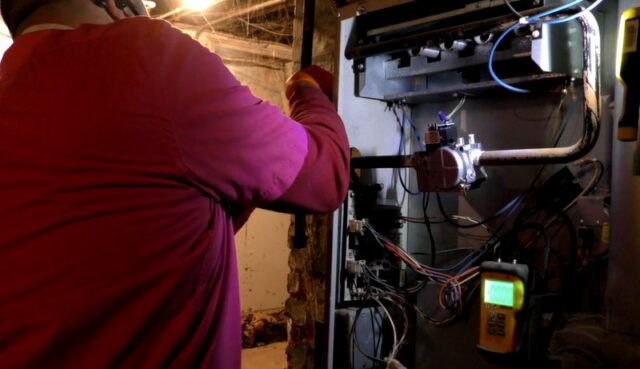
The cause of the popping noise coming from your furnace is not always easy to identify. However, there are a few common causes to consider before calling your local heating service.
One of the most frequent causes of a popping sound in your furnace is moisture in the heat exchanger. When your furnace is running, condensed water vapor will accumulate on the tubing inside the heat exchanger and create a pool of water that can settle and rust away at the components.
This can create noise as it bubbles and boils off. To help reduce this problem, ensure that you have regular maintenance checks done by air conditioner repair Toronto on your system and make sure the evaporator coils are kept clean.
Cleaning these components can aid in reducing any harmful buildup that may restrict airflow and generate excess heat in your system.
Another potential cause for a popping sound coming from your furnace could be an improperly installed ductwork system.
A noisy furnace may indicate loose fittings or poorly sealed seams with gaps where the air is escaping through its joints or seams, resulting in a loud sound at start-up or during operation due to its pressure variations.
Check with an HVAC contractor to make sure that everything has been properly installed and sealed shut to reduce noise levels when running your system.
Finally, wear and tear on parts such as bearings or fans within the unit can also contribute to making loud noises when starting up or during operation. Check with an expert to see if any components need replacement or adjustment due to age-related wear and tear on metal parts.
Basic Troubleshooting Tips for a Popping Furnace
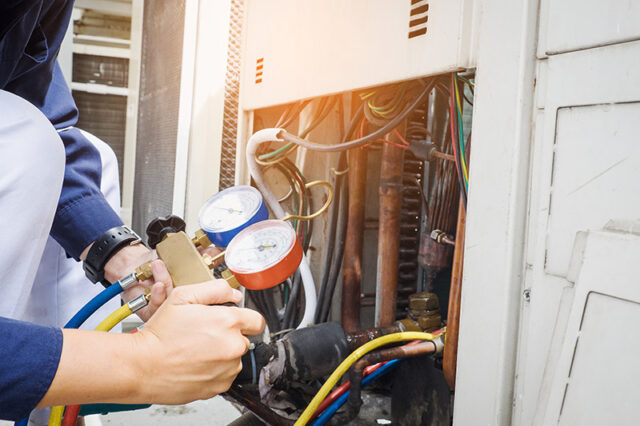
To properly diagnose and fix your furnace, try these troubleshooting steps:
Safety Tip: Be sure to turn off the power to the furnace at the circuit breaker before beginning work.
Ensure that all registers are open and free from any blockage due to furniture or carpeting.
Check for broken fan blades as these could be disrupting airflow.
Examine vents for signs of corrosion due to humidity.
Verify that your heat pump is appropriately sized for your home.
Inspect vent piping for clogged or blocked condensate lines.
Empty debris out of blower wheels that might have accumulated over time.
Make sure gas fittings are secure and properly sealed.
Following these basic steps can help you pinpoint where a problem lies so you may be able to appropriately repair it yourself or direct a professional HVAC technician towards the source of an issue with more confidence in their diagnosis and resulting advice for repair or maintenance choices!
Cleaning and Maintenance: How to Properly Maintain Your Unit
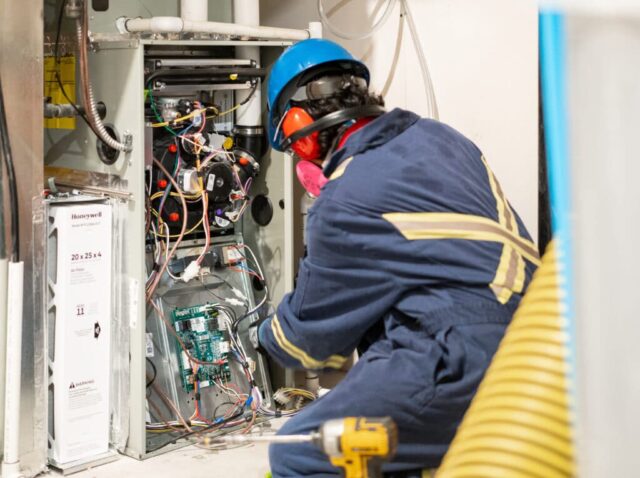
Although a professional should be contacted to provide comprehensive diagnostic, and maintenance services and to fix a popup furnace, there are certain steps you can take yourself to maximize your furnace’s performance and safety.
Regular cleaning, for example, is an essential part of proper furnace maintenance. A dirty or clogged filter can restrict airflow and reduce the overall efficiency and lifecycle of the equipment.
If the filter becomes too clogged it can also lead to issues with noise such as loud banging, knocking, or popping sounds from your furnace system.
To maintain a clean air filter in your unit:
• Mark the date of when you replace your filter inspection on your calendar so you remember when it’s time to replace it again!
• Clean filters every other month – if you have pets or live in especially dusty areas you may need to clean them more frequently than this.
• When replacing/cleaning your filters make sure they’re installed correctly – wrong installation of the filter can lead to inefficient flow and low air pressure in the unit, resulting in noise issues such as popping sounds from the furnace unit.
• Choose a good quality filter that fits properly into the slot (for standard 1” thick filters) or purchase one that fits securely over the entire outside of the unit (for washable pleated filters). Make sure it meets or exceeds the manufacturer’s specifications – consult their manual for more information on this.
When to Replace Common Parts
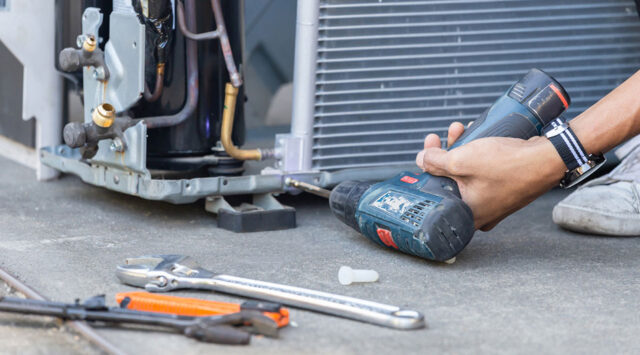
It’s important to recognize the warning signs signifying it may be time to replace common parts. If your furnace isn’t working correctly, there may be an issue with one of the major components. The following sections will outline which parts might need replacing, and how to identify them.
• Ignitor: As furnaces age, they require more electricity use to keep them running and the ignitor is the major part that could need replacing. In order to identify if your ignitor needs replacement look for a glowing or arching instead of a steady glare or glow from the ignitor when it is heating up as well as any kind of popping sound coming from the burner area.
• Burner Assembly: How do you know when you need to replace your burner assembly? Signs may include yellow flame instead of blue which indicates an incomplete combustion process and smoke or soot in or around the burner unit itself. You will want to get this replaced sooner rather than later since it can become a safety hazard in addition to being hazardous to your furnace’s efficiency.
• Thermostat: The thermostat protects your furnace by ensuring that settings remain consistent without overworking the unit itself and damaging components within, so if you notice any issues with temperatures that don’t seem right then chances are it’s time for a replacement thermostat.
Additionally, if you find yourself adjusting temperatures more frequently than before this could be another sign that its functioning is diminishing and may need something entirely new installed!
When to Call a Professional
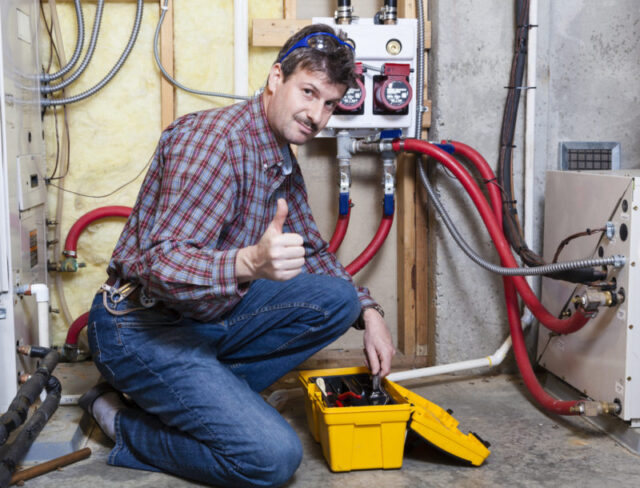
No matter how handy you are, there are some repairs that should be left to a professional. Some parts of the furnace are dangerous to work on, and can even cause injury if you don’t know exactly what you’re doing.
Gas-operated furnaces in particular can present an additional hazard due to combustible gas. If you aren’t entirely sure why your furnace is making a popping or crackling noise or what needs to be done to fix it, then it’s best to call in a professional.
A trained service technician can identify the source of the noise and make sure your furnace is repaired properly and safely. In some cases, this may involve cleaning or replacing components in the unit itself, or adjusting airflow levels and other settings.
In addition to fixing any current issues, the technician can run tests on your system to make sure everything is running as efficiently as possible for maximum energy savings.
Conclusion
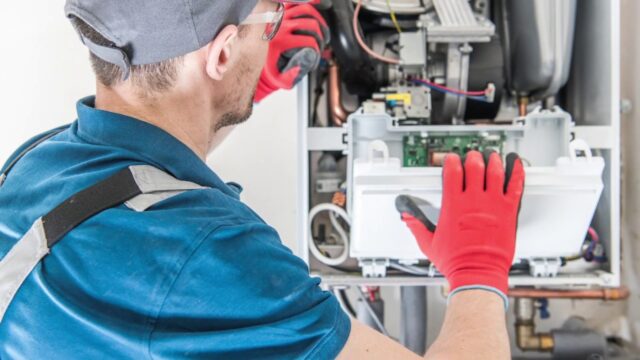
Fixing a popping furnace is not an easy task, but it can be done. By following the steps outlined in this article, you can quickly identify and fix the problem with your furnace. With just a few tools, some patience, and an eye for detail, you can easily fix your popping furnace in no time at all! So don’t wait any longer – get started on fixing that pesky furnace today!

